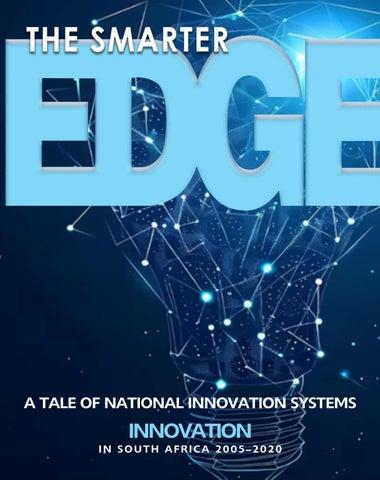Unlocking the Power of International Collaborations in Educational Technology: Strategies, Benefits, and Global Impact
Educational technology (EdTech) has rapidly evolved over the past decade, reshaping classrooms and learning experiences across the globe. But the true catalyst for scalable,innovative,and equitable educational solutions lies in international collaborations in EdTech. By harnessing global expertise, experience, and diversity, educational institutions, startups, and governments alike can fast-track the transformation of education for the 21st century. In this article, we’ll explore the strategies, benefits, and lasting global impact of international EdTech partnerships, offering real-world case studies and actionable tips to maximize their potential.
Why International Collaborations Matter in Educational Technology
The need for global collaboration in educational technology is more pressing than ever. As digital learning solutions become increasingly central to education systems worldwide, cross-border partnerships have the power to:
- Promote innovation by uniting diverse perspectives and technological capabilities.
- Bridge educational gaps in underserved or remote regions.
- Share resources – from digital content and platforms to best practices and assessment tools.
- Create adaptable solutions that consider cultural and language differences.
- Address global challenges such as equitable access, teacher training, and lifelong learning.
Key Benefits of International EdTech Collaborations
Unlocking partnerships between countries,institutions,and technology providers unlocks tremendous advantages. Here’s how international collaborations in educational technology shape the future of learning:
1. Accelerated Innovation and Problem Solving
- Global teams encourage fresh thinking and novel solutions to persistent or emerging challenges.
- Joint research opportunities broaden the scope and depth of EdTech innovations.
2. Access to Diverse Expertise and Resources
- Collaborators pool technical knowledge, content progress skills, and regional insights.
- Shared infrastructure and platforms lead to cost-effective scaling.
3. Enhanced Cultural Relevance and Inclusivity
- Multi-lingual and culturally-tailored content increases learner engagement and accessibility.
- Solutions are co-designed to address local contexts while retaining global standards.
4. Greater Reach and Scalability
- Partnerships ease the adaptation of EdTech tools to new markets and education systems.
- global distribution networks accelerate impact and adoption.
5. amplified Funding Opportunities
- International grants, public-private partnerships, and venture funding are more accessible via multinational consortia.
- Shared financial risk strengthens long-term project sustainability.
Proven Strategies to foster Effective International EdTech Partnerships
Building successful international collaborations in educational technology is both an art and a science. Thes research-backed strategies can turn cross-border partnerships into high-impact ventures:
1. Define Shared Objectives Early
- Clearly align project goals,desired outcomes,and success metrics at the outset.
- Regularly revisit and refine objectives to stay responsive to evolving needs.
2. Embrace Versatility and Open Communication
- Recognise that time zones, languages, and working styles will vary.
- Utilize digital communication tools (Zoom, Slack, Microsoft Teams) to build rapport and openness.
3. Prioritize Cultural Sensitivity
- Invest in cultural awareness training for project teams.
- Ensure diversity in leadership and decision-making groups.
4. Focus on Data Security and Privacy Compliance
- Stay compliant with international data regulations (GDPR, FERPA, etc.).
- Develop robust protocols for information sharing and student privacy.
5.Integrate Continuous Evaluation and knowledge Sharing
- Use ongoing assessment to measure impact and iterate quickly.
- Document lessons learned and make resources available to the broader EdTech community.
Real-World Case Studies: International Collaboration in Action
EdTech Hub: Bridging Research and Practice Across Continents
EdTech Hub – a global research partnership funded by the UK government and co-led by institutions in Europe, Africa, and Asia – is a standout example of international collaboration in educational technology. By fostering interdisciplinary research and collaborating with local ministries of education, EdTech Hub has influenced digital learning policies and resource allocation in over 10 lower- and middle-income countries since 2019.
The Global Learning XPRIZE: Crowdsourcing Educational Software Across Borders
This competition challenged teams worldwide to develop scalable, open-source software that empowers children to teach themselves basic reading, writing, and arithmetic. The project united developers, educators, and linguists from over 40 countries, resulting in applications now being used to support literacy in remote villages in Tanzania and beyond.
UNESCO’s Global Education Coalition: Navigating the Covid-19 Crisis
Launched in response to pandemic-related school closures, this coalition brought together over 175 partners from the public and private sectors. Their coordinated initiatives provided digital content, teacher training, and internet connectivity, reaching millions of learners previously excluded from digital education.
global Impact: Transforming the Future of Learning
The ripple affect of international EdTech collaborations extends beyond pilot projects or single initiatives. Long-term impacts include:
- Narrowing the global digital divide, giving learners everywhere equitable access to modern education.
- Boosting digital literacy and workforce skills vital for the future economy.
- Strengthening resilience of education systems to global disruptions, such as pandemics or climate crises.
- Supporting lifelong learning through adaptable,multilingual platforms.
“International collaborations in educational technology are not just partnerships – they’re cornerstones for a more inclusive, connected, and resilient global education ecosystem.”
Practical Tips for Getting started with International EdTech Collaborations
- Research potential partners: Use networks like EdTech Europe, World Bank Education, or local innovation hubs.
- Attend global edtech conferences (in-person or virtual) to forge connections and discover new trends.
- Start with pilot projects to build trust and refine collaboration processes before scaling.
- Leverage technology: Embrace cloud platforms for development, communication, and resource sharing.
- Seek international funding and mentorship through grants from entities like UNESCO or regional bodies.
Conclusion: The Future Belongs to Collaborative Innovation
Unlocking the power of international collaborations in educational technology is essential for addressing our most persistent education challenges and realizing the promise of digital learning for all. By adopting proven strategies, capitalizing on the diverse strengths of global teams, and staying focused on measurable impact, educators and EdTech leaders can transform education across borders. Whether you’re an educator, policymaker, technologist, or entrepreneur, now is the time to embrace collaboration – because a globally connected approach is the key to an equitable, innovative, and lasting educational future.
Start exploring partnerships today to put your institution or startup at the forefront of global EdTech innovation!

